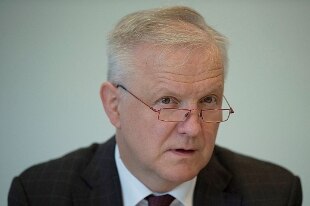Share
August 16, 2019The Governor of the Bank of Finland, Olli Rehn, one of the 'hawks' of the ECB's board of directors, plays ahead and lets it be known that the Frankfurt institute could take up the bazooka again from the next meeting on September 12, launching a much more substantial stimulus plan than expected by the markets. Mario Draghi had surprised everyone last month, announcing drastic measures and suggesting that a cut in rates and a restart of the purchase plan would be ready by October. Rehn went further, announcing that these measures will most likely arrive as early as September.The move, explains Rehn, has a precise reason: "When you work with financial markets it is often better to exceed expectations and have a very strong package of political measures rather than miss the target". Between the end of July and August it happened that recession fears grew, spreading across the globe and in Europe in particular: the German economy recorded a small but significant contraction in the second quarter, Italy and France are practically still, the trade tensions between the USA and China have risen, the currencies of the emerging countries have entered into distress, forcing several central banks on the outskirts of the world to cut rates, the yield curve in the US has been reversed. In short, many red spies have been lit, indicating that the problems of the global economy have intensified. That's why the ECB has decided that it doesn't want to waste time.
But what will the Frankfurt institution do in less than a month? The ECB talks about the Bazookas but it will be difficult to say exactly what it will bring out of the hat in September. The measures under study are different and certainly those with the greatest impact on the markets will concern the new interest rate cuts and the launch of a Qe2, that is a new securities purchase program, which would follow the Qe1 withdrawn at the end of last year. According to the Wall Street Journal, Qe2 could be 50 billion euros a month and could also involve the purchase of new assets, in addition to government bonds and corporate bonds. As for the rate cut, the hypothesis is that the refinancing rate, that is the main one, currently at zero, could be cut by 10 basis points, while the deposit rate, that is the one that the banks pay to deposit their funds at Frankfurt, which is negative at -0.40% could be reduced by 10 or even 20 basis points.

